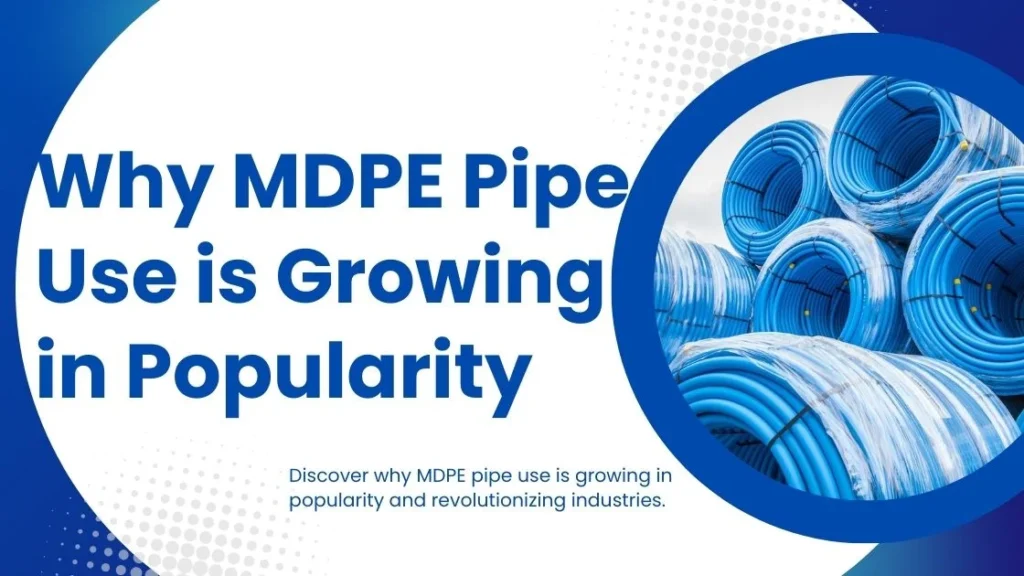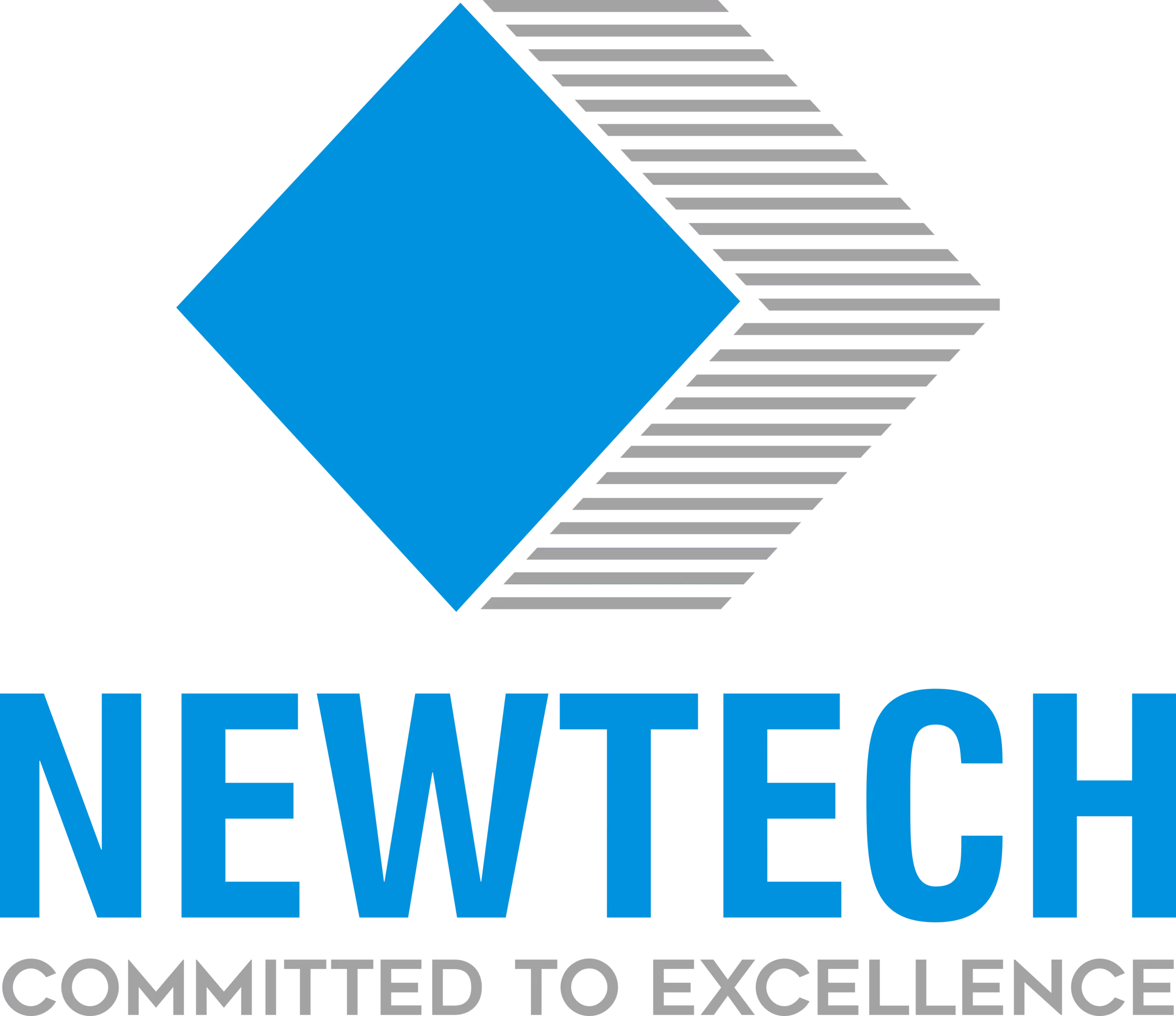Why MDPE Pipe Use is Growing in Popularity
Discover why MDPE pipe use is growing in popularity and revolutionizing industries.
The modern world is witnessing a paradigm shift in how infrastructure is designed and implemented. One material, MDPE (Medium Density Polyethylene) pipe, is at the forefront of this transformation. As industries seek more efficient, durable, and sustainable solutions, MDPE pipes are emerging as the preferred choice. This article explores why MDPE pipe use is growing in popularity and revolutionizing industries.
What is MDPE Pipe?
Medium Density Polyethylene (MDPE) is a type of thermoplastic polymer used extensively in piping solutions. It strikes a balance between the flexibility of Low Density Polyethylene (LDPE) and the rigidity of High Density Polyethylene (HDPE), making it an optimal choice for various applications.
Brief Overview of MDPE Pipe
MDPE pipes are known for their strength and flexibility, making them suitable for an array of uses, from water supply to gas distribution. Their unique properties have positioned them as a superior alternative to traditional piping materials such as PVC and metal.
Historical Context of MDPE Pipe Use
The development and use of MDPE pipes began in the mid-20th century. Initially utilized in gas distribution due to their resistance to corrosion and ease of installation, their application has since expanded to other sectors, including water supply and industrial processes.
MDPE Pipe Composition and Properties
MDPE pipes are composed of ethylene polymers, characterized by medium density. This composition grants them a unique set of properties:
- Durability and Strength: MDPE pipes can withstand significant stress without compromising structural integrity.
- Flexibility and Versatility: They can bend and flex without breaking, making installation easier and more adaptable to various terrains.
- Resistance to Corrosion and Chemicals: Unlike metal pipes, MDPE is resistant to rust and chemical reactions, enhancing longevity.
Environmental Impact of MDPE Pipes
Sustainability is a critical concern in modern infrastructure development. MDPE pipes contribute positively to this goal.
Sustainability and Eco-Friendliness
MDPE pipes require less energy to produce compared to metal pipes, reducing their carbon footprint. Their long lifespan also means fewer replacements, further minimizing environmental impact.
Recyclability and Waste Reduction
MDPE pipes are recyclable. At the end of their lifecycle, they can be reprocessed into new products, reducing waste and promoting a circular economy.
Advantages of MDPE Pipes in Various Industries
The versatility of MDPE pipes has led to their adoption across multiple industries, each benefiting from their unique properties.
Applications in the Water Supply Industry
MDPE pipes are increasingly used in water supply systems due to their durability and resistance to leaks. They ensure a clean and reliable water supply with minimal maintenance.
Usage in Gas Distribution Systems
MDPE pipes have been a staple in gas distribution for decades. Their resistance to corrosion and ease of joining make them ideal for safely transporting natural gas over long distances.
Role in Agricultural Irrigation
In agriculture, MDPE pipes are used for irrigation systems. Their flexibility allows for easy installation in diverse landscapes, ensuring efficient water delivery to crops.
MDPE Pipes in Industrial Applications
Industries rely on MDPE pipes for transporting chemicals and waste products. Their resistance to chemical reactions ensures safe and effective handling of industrial materials.
Installation and Maintenance of MDPE Pipes
One of the key advantages of MDPE pipes is their straightforward installation and maintenance.
Ease of Installation
MDPE pipes are lightweight and flexible, making them easier to install than traditional materials. They can be joined using simple techniques, reducing installation time and costs.
Low Maintenance Requirements
Once installed, MDPE pipes require minimal maintenance. Their resistance to corrosion and wear means fewer repairs and lower long-term costs.
Cost Efficiency of MDPE Pipes
Cost efficiency is a significant factor driving the popularity of MDPE pipes.
Initial Costs vs. Long-Term Savings
While the initial cost of MDPE pipes may be higher than some alternatives, their durability and low maintenance needs result in significant long-term savings. Over time, the total cost of ownership is lower than that of traditional materials.
Comparison with Other Pipe Materials
Compared to materials like PVC, steel, and iron, MDPE pipes offer a superior balance of cost, durability, and performance. Their lightweight nature and resistance to damage make them more economical in both installation and maintenance.
Why MDPE Pipe Use is Growing in Popularity
Several factors contribute to the growing popularity of MDPE pipes.
Technological Advancements
Advances in polymer technology have enhanced the properties of MDPE, making it an even more attractive option for modern infrastructure projects. Innovations in manufacturing processes have also reduced costs and improved quality.
Rising Demand in Emerging Markets
Emerging markets, with their rapidly growing infrastructure needs, are increasingly adopting MDPE pipes. The demand for reliable and cost-effective piping solutions in these regions is driving global growth.
Government Regulations and Standards
Governments worldwide are implementing stricter regulations on materials used in public infrastructure. MDPE pipes often meet or exceed these standards, making them a preferred choice for compliance and safety.
Innovative Projects Utilizing MDPE Pipes
From large-scale water supply systems in urban areas to complex gas distribution networks in rural regions, MDPE pipes have proven their worth. Case studies highlight the benefits realized in terms of cost savings, efficiency, and durability.
Future Trends in MDPE Pipe Use
The future of MDPE pipes looks promising, with several trends pointing to continued growth.
Predictions for Market Growth
Analysts predict sustained growth in the MDPE pipe market, driven by increasing infrastructure investments and technological advancements. The demand for sustainable and efficient materials will further bolster this trend.
Potential Challenges and Solutions
Despite their advantages, MDPE pipes face challenges such as competition from alternative materials and market fluctuations. However, ongoing research and development, coupled with strategic industry partnerships, are poised to address these issues.
Conclusion
Summarizing the Benefits of MDPE Pipes
MDPE pipes offer a compelling combination of durability, flexibility, and cost efficiency. Their environmental benefits further enhance their appeal, making them a smart choice for modern infrastructure.
Final Thoughts on the Popularity of MDPE Pipes
As industries continue to evolve, the demand for innovative and reliable materials will only increase. MDPE pipes, with their proven track record and future potential, are set to play a pivotal role in shaping the infrastructure of tomorrow.
FAQs About MDPE Pipe Use
Why are MDPE pipes gaining popularity?
MDPE pipes are favored for their durability, flexibility, and cost-efficiency, making them ideal for water supply, gas distribution, and irrigation. They are also sustainable and recyclable, meeting modern infrastructure needs effectively.
What is MDPE pipe made of?
MDPE (Medium Density Polyethylene) pipes are composed of ethylene polymers with medium density, offering a balanced blend of strength and flexibility.
What are the advantages of MDPE pipes?
MDPE pipes are known for their resistance to corrosion and chemicals, ease of installation, low maintenance requirements, and long-term cost savings compared to traditional materials like PVC and metal.
Where are MDPE pipes used?
They are used extensively in water supply systems, gas distribution networks, agricultural irrigation, and various industrial applications for transporting chemicals and waste products.
How do MDPE pipes contribute to sustainability?
MDPE pipes require less energy to produce than metal pipes and are recyclable at the end of their lifespan, promoting environmental sustainability and reducing carbon footprint.
What future trends are expected for MDPE pipe use?
The market for MDPE pipes is projected to grow due to technological advancements, increasing demand in emerging markets, and stringent government regulations favoring sustainable infrastructure materials.


